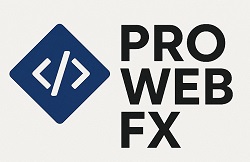Every VPS owner knows the feeling: you press Enter on a ping command, wait for the response, and pray your server is still breathing. Here’s how the heartbeat of cheap VPS servers plays out.
Author: Pro Web FX (Page 1 of 2)
So you’ve bought a cheap VPS. It feels powerful, exciting, maybe even a little dangerous. And in just ten minutes, you can bring it to its knees without even trying. Here’s how.
Geo-blocks are the villains of the streaming world. They decide what you can or can’t watch based on where you live. But just like Walter White found a way around obstacles, you can too—with a VPN. Here’s how a VPN helps you break bad with geo-blocks and reclaim your streaming freedom.
Nothing ruins a streaming session faster than a geo-block. You’ve got the subscription, the popcorn, the perfect mood—then suddenly, “This content is not available in your region.” A Virtual Private Network (VPN) solves this problem by letting you access streaming platforms worldwide.
VPS hosting is powerful… until you put it on a starvation diet. Here’s how cheap hosting plans have been “helping” people underfeed their servers for years.
The Virtual Private Server (VPS) market in 2025 is evolving faster than ever, driven by AI automation, edge computing, sustainable infrastructure, and hybrid architectures. Businesses and developers now have a wider range of specialized VPS options—each built to address distinct needs in performance, scalability, and management.
In 2025, managed VPS hosting is no longer just about getting a slice of server resources — it’s about flexibility, automation, and meeting specific workload needs. Whether you’re running a high-traffic website, complex applications, or data-heavy workloads, providers like ScalaHosting and Hostinger have evolved their offerings to cater to different operating systems, performance tiers, and deployment styles.
Adobe’s ColdFusion Developer Week 2025 wrapped up in late June, bringing a wave of announcements, best practices, and real-world tips for developers and businesses running on ColdFusion. If you couldn’t attend every session, here’s a quick rundown of the key takeaways—especially if you manage or host ColdFusion applications.
Security in ColdFusion 2025 isn’t just about writing clean CFML—it’s about making sure your hosting environment is always running the latest updates. Whether you’re using a ColdFusion cloud server provider, shared hosting, or a dedicated server, patch management is essential.
In August 2025, managing a Virtual Private Server is no longer a task reserved for seasoned sysadmins. Hostinger’s AI-powered assistant, VPS Kodee, is transforming how users interact with VPS hosting—whether you’re running Linux, Windows, or specialized VPS setups.

